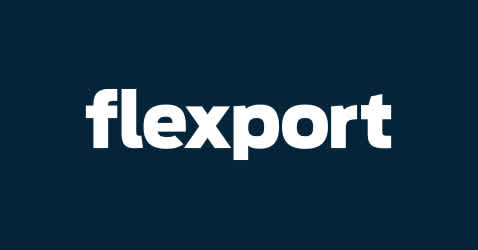
2019 年 10 月 10 日
Welcome Crux Systems to the Flexport Family
Welcome Crux Systems to the Flexport Family
Flexport acquires advanced tracking technology to further enhance shipment visibility
On the heels of announcing our biggest software refresh ever with the new Flexport Platform Experience 2.0, we’ve made another significant enhancement to our technology with the acquisition of Crux Systems, the most advanced technology solution for tracking ocean containers. The acquisition will further accelerate the automation of Flexport's shipment tracking capabilities, upgrading the accuracy and timeliness of the track-and-trace data that powers our freight forwarding services.
Crux Systems shows real-time status and location of import containers coming into North America, all in one place. This data informs supply chain planning by driving actionable insights that can reduce dwell times, demurrage fees, and hours spent tracking containers. The addition of Crux Systems’ technology to Flexport’s Operating System for Global Trade will further empower clients with visibility and control over their inventory in motion and unlock lower and more predictable supply chain costs.
Ryan Petersen, Founder and CEO of Flexport, describes the acquisition, “By making the measurement of on-time performance more scientific and objective, integrating Crux Systems’ technology directly into our platform will allow us to align incentives with our customers and operate with real skin in the game.”
Ryan adds, “We’ve experienced first-hand how Crux Systems’ data solutions can drive more efficient supply chains. Integrating Crux Systems technology and expertise natively into the Flexport platform will take us one step closer to a world where the service levels of freight forwarders are measured by on-time performance.”
A natural fit to make global trade easy for everyone
Without advanced track-and-trace technology, shippers often use multiple websites, emails and phone calls to track their ocean shipments. This is especially hard to do at both origin and destination, which Crux Systems refers to as the “Crux” of the route. For example, trucking carriers submit gate-out information hours after a pickup occurs. So shippers engage in what amounts to a relay race in the dark, potentially incurring unnecessary delays and fees as a result.
That’s why CEO Eric Klein and COO Jennifer Colvin founded Crux Systems in 2014, to help cargo owners, freight forwarders, and trucking companies gain real-time visibility into the location and status of containerized cargo.
Not only do the Flexport and Crux Systems technologies naturally complement each other, but the companies also share a headquarters in the San Francisco Bay Area and similar values of transparency, customer-centricity, and efficiency. And the shared benefits to Flexport and Crux Systems’ customers will be clear and immediate:
- For Flexport clients: With the integration of Crux Systems’ technology, Flexport clients will benefit from even more comprehensive shipment visibility and increased operational efficiency without any disruption in services or increase in cost.
- For Crux Systems clients: Current Crux Systems clients will continue to sign into their Crux Systems accounts and track their containers as usual. Shippers, freight forwarders and trucking companies that are interested in purchasing Crux Systems’ standalone service can do so at CruxSystems.com.
How Crux Systems works
Crux Systems aims to make getting container status info as easy as searching on Google. The client types in the number of their import container, or uploads a file listing all their containers. Crux Systems auto-populates their data in a dashboard that shows automated updates and sends notifications about containers that require attention. They also have APIs available for both loading shipments and getting shipment updates.
For each container, Crux Systems shows the following information:
- Vessel ETA
- Vessel actual arrival,
- Container status
- Milestones such as gate out, loaded-on vessel, discharged, or departed
- Last free day
- Holds
- Demurrage
- And more
The inclusion of estimated and actual arrival dates leads to increased forecasting accuracy. And because of Crux Systems’ automations, their clients can receive data such as gate-out updates faster than carriers would provide them directly. Using the updates from Crux Systems increases internal efficiencies and takes pressure off the carrier. Also, having gate-in data allows for automation of empty container return events.
Crux Systems Analytics
Clients of Crux Systems’ stand-alone service can add tags, create custom lists, mark containers as favorites, and include notes that allow them to easily manage their shipments. They can organize their workspace by filtering for containers by terminal, vessel, status and region. In the analytics section of the platform, clients can also view containers by these filters in addition to expected arrival date.
Crux Systems collaboration
Clients with enterprise accounts can make this information shareable teamwide, eliminating the need to email spreadsheets back and forth among team members. Crux Systems also offers APIs for sharing container data with supply chain partners.
Looking ahead
Equipped with Crux Systems updates at their fingertips, Flexport Squads will give better, quicker insights to our clients to help save them time and money. Meanwhile, Flexport intends to extend Crux Systems’ capabilities beyond North America, thereby increasing supply chain efficiency for our clients around the globe. It’s one more step toward being able to track every container in the world, making global trade even easier for everyone involved.

See how you can achieve real-time visibility into your inventory in motion.
View services


